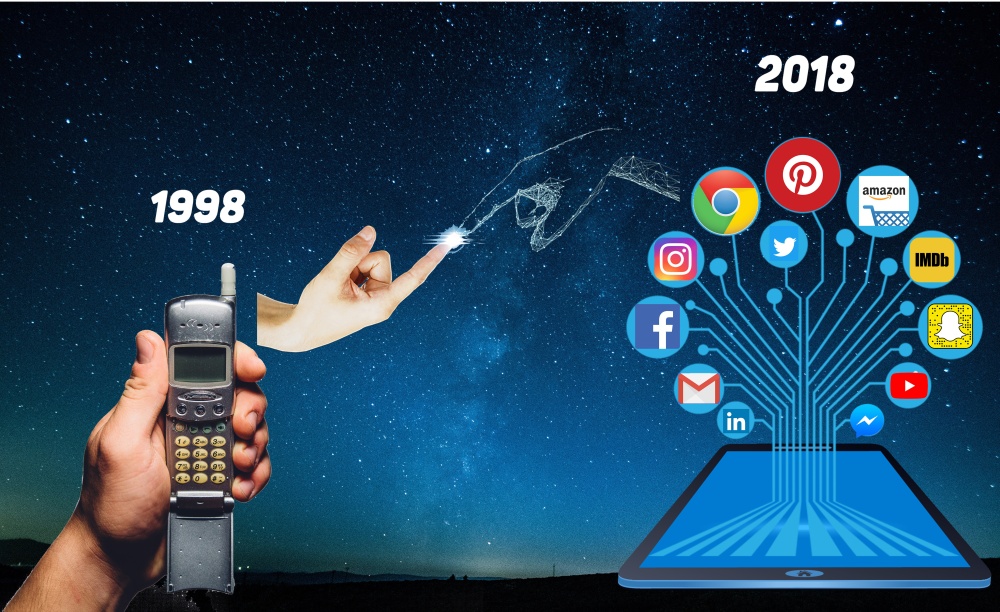
In the second image, I also focused on the concept of “Old and New” in the digital industry.
At the first stage, I intended to design an image that illustrates the mobile shopping revolution. But the traditional way of shopping is hard for me to design. Therefore, I tried to create an image to describe the revolution of the smartphone. In today’s digital age, not only online shopping but also a variety of business can be done by using a mobile phone.
Moving to this image, where the verbal elements of this picture are the year labels. Starting from the left, there is an old mobile in the 1988 section. At that time, the mobile phone cannot support multiple functions, voice transmitting and text messaging are their basic functions. So I used this picture that a mobile phone with a small and black-and-white screen.
While moving to the middle section, I used the two connected hands as the framing. The light between the real hand and the digital hand represents the digital transition, as well as the last 20 years. It also can be regarded as a bridge to link pre-digital age and digital age. Over the years, with the rise of mobile phones and the convergence of digital technologies, mobile phones have already become personal mobile computers. In this composition, the smartphone in the 2018 section that is the most salient element. To enhance the contrast effect between old mobile and digital mobile phone, the smartphone with vivid colors is formed as the largest factor out there. Those digital elements seem like a ‘digital tree’, and the varieties of applications are the fruits on the tree.
However, smartphone has fulfilled all sorts of people’s expectations in today’s world.
References:
Hall, D.1999, “The Original and the Reproduction: Art in the Age of Digital Technology”, Visual Resources, vol.15, no. 2, pp. 269-278.
Kress, G. and Van Leeuween, T. 1996, Reading images: the grammar of visual design, Routledge, London, New York.